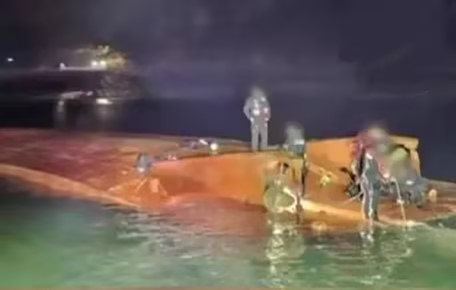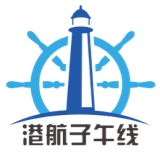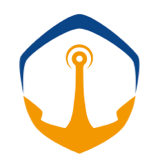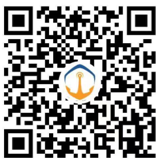A Fishing Boat with 7 People Capsizes off the West Coast of South Korea 突发!一艘载有7人渔船在韩国西部海域倾覆

Image Credit: The Internet
图片源于网络
On December 30th at around 18:26 local time, a fishing boat capsized near the waters off Seosan City, South Chungcheong Province, South Korea. The involved fishing boat, with a displacement of 83 tons, belonged to an ocean environmental management company. At the time of the incident, there were 7 people on board. Thanks to the full efforts of the South Korean Coast Guard, 2 people have been successfully rescued so far, while 5 people are still missing. Following the accident, the South Chungcheong Provincial Fire Department worked together with the Coast Guard to swiftly carry out search and rescue operations, continuing to search for the missing people in the area.
当地时间 12 月 30 日 18 时 26 分许,于韩国忠清南道瑞山市附近海域,发生一起渔船倾覆事件。涉事渔船排水量为 83 吨,隶属于一家海洋环境治理公司,事发时船上共有 7 名人员。经韩国海警全力救援,目前已成功救起 2 人,仍有 5 人处于失踪状态。事故发生后,忠清南道消防本部协同海警迅速开展搜救行动,在事发海域持续搜寻失踪人员.
Fishing Boat Incidents Occur Frequently
Fishing boat capsizing incidents are not rare in global fishing activities, and the casualties and property losses they cause are significant. For instance, in 2012, the "Alaska Star" fishing boat capsized in the waters off Alaska, USA, during severe weather operations. Out of the 15 crew members on board, only 5 were rescued, while 10 perished. The accident investigation revealed that equipment failure and the crew's inability to effectively respond to severe weather conditions were the main causes.
According to incomplete statistics, fishing boat-related accidents, including capsizings, collisions, and fires, are often caused by factors such as adverse weather, equipment aging and failure, and improper operation by crew members.
渔船事故屡见不鲜
渔船倾覆事故在全球渔业活动中并非个例,其造成的人员伤亡和财产损失不容小觑。以 2012 年美国阿拉斯加海域的渔船倾覆事故为例,“阿拉斯加之星” 号渔船在恶劣天气作业期间突然倾覆,船上 15 名船员仅 5 人获救,10 人遇难。事故调查显示,设备故障以及船员未能及时有效应对恶劣天气状况是主要原因。
据不完全统计,渔船相关事故,涵盖倾覆、碰撞、火灾等多种类型,其中恶劣天气、设备老化故障、船员操作不当等因素是引发此类事故的常见诱因.
Preventive Measures Discussion
Fishing Boat Maintenance and Equipment Management
Fishing boat owners and operating companies should establish rigorous equipment maintenance systems to ensure that fishing boats undergo regular comprehensive inspections and maintenance. The boat's structure must be kept stable, with key parts such as the keel and hull being checked for cracks or damage; navigation equipment should be accurate to ensure the correct course during sailing; communication equipment must be unobstructed to ensure that crew members can contact the outside in emergency situations. Worn-out or aged parts should be replaced in a timely manner to ensure that fishing boats have good navigability under various sea conditions.
预防措施探讨
渔船维护与设备管理
渔船所有者和运营公司应建立严谨的设备维护制度,确保渔船定期接受全面检查与保养。船体结构需保持稳固,重点检查龙骨、船壳等关键部位是否存在裂缝或损伤;导航设备应保持精准,以保障渔船在航行过程中的正确航向;通信设备必须畅通无阻,确保船员在紧急情况下能够及时与外界取得联系。及时更换磨损严重或老化的零部件,保证渔船在各类海况下具备良好的适航性。
Crew Training and Capability Enhancement
Crew members should receive systematic and professional training. The training content should include, but not be limited to, the proficient mastery of sailing skills, such as boat handling techniques in different sea conditions and the correct use of various navigation instruments; the cultivation of emergency response capabilities, covering the execution of emergency plans for fires, collisions, capsizing; and the strengthening of safety awareness, keeping crew members alert to potential dangers at all times. By combining theoretical learning with practical exercises, the ability of crew members to respond to risks in complex environments can be improved, ensuring that they can make correct decisions and operate effectively in the face of emergencies.
船员培训与能力提升
船员应接受系统且专业的培训。培训内容包括但不限于航海技能的熟练掌握,如在不同海况下的操船技巧、对各类航海仪器的正确使用;应急处理能力的培养,涵盖对火灾、碰撞、倾覆等突发状况的应急预案执行能力;安全意识的强化,使船员时刻保持对潜在危险的警觉性。通过理论学习与实践演练相结合的方式,提升船员在复杂环境下应对风险的能力,确保在面对紧急情况时能够做出正确决策并有效操作。
Safety Monitoring and Early Warning System Construction
Relevant management departments should strive to build a comprehensive maritime safety monitoring and early warning system. By using advanced meteorological monitoring technology, weather changes can be obtained in real-time, including key indicators such as wind force, wind direction, and wave height; at the same time, marine environment monitoring equipment should be used to closely monitor the dynamics of the sea, such as water flow speed and temperature changes. By establishing efficient information transmission channels, early warning information can be accurately conveyed to every fishing boat in a timely manner, providing crew members with enough time to adjust their sailing plans or take evasive measures, such as choosing a safe route or returning to port to avoid wind in advance of severe weather.
安全监测与预警系统建设
相关管理部门应致力于构建完善的海上安全监测与预警体系。运用先进的气象监测技术,实时获取天气变化信息,包括风力、风向、海浪高度等关键指标;同时利用海洋环境监测设备,密切关注海况动态,如水流速度、水温变化等。通过建立高效的信息传递渠道,及时将预警信息精准传达至每一艘渔船,为船员提供充足的时间调整航行计划或采取避险措施,如在恶劣天气来临前选择安全航线或及时回港避风。
The subsequent progress of the accident still needs to be closely monitored. Relevant departments should actively carry out rescue work while deeply analyzing the causes of the accident and further improving prevention mechanisms to reduce the frequency of fishing boat capsizing accidents and ensure the safe conduct of fishing activities.
事故的后续进展仍需持续关注,相关部门应在积极开展救援工作的同时,深入分析事故原因,进一步完善预防机制,以降低渔船倾覆事故发生的频率,保障渔业生产活动的安全进行.








